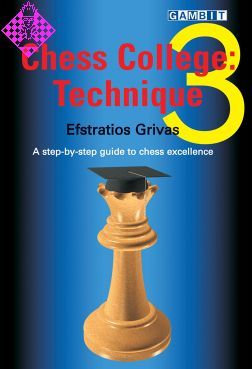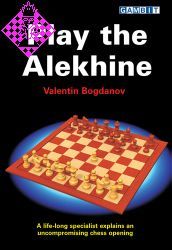Artikelnummer
LMGRIT
Autor
Technique
A step-by-step guide to chess excellence
112 Seiten, kartoniert, Gambit, 1. Auflage 2006
Aus der Reihe »Chess College«
Final vergriffen
Chess College is a series of books that will take intermediate players to new levels of chess understanding. Efstratios 1 Grivas, a grandmaster and highly experienced chess trainer, provides a wealth of instruction on many aspects of chess middlegames. The emphasis is on practical understanding: whenever he introduces a new idea, Grivas immediately illustrates it with a number of entertaining and instructive examples. Many of these games are fresh examples drawn from his own practice, which has the great benefit that he can explain with authority what was going on over the board.
Volume 3: Technique features many training tips and discusses important topics such as:
Physical and Psychological Factors
Bishop vs knight
Standard sacrifices against the castled position
Opposite-coloured bishops
Immobilization
How to handle won positions and lost positions
Small advantages
Introduction
Every chess-player who wishes to improve his level in the difficult subject of chess is obliged, first of all, to study methodically and understand the existing principles that govern the theory of the opening, middlegame and endgame.
Most chess-players focus more on the study of opening theory than other aspects of the game. The reasons are probably clear: opening theory is easier to learn and can provide immediate results, although this is based more on the opponent's ignorance than our own abilities. Even for a chess trainer, it is easier to teach some variations from this or that opening or a set of simple tactical motifs than to engross himself in the exposition of middlegame and endgame theory.
Yes, middlegame and endgame theory does exist. The great difficulty in approaching it lies in the fact that it does not follow absolute and clear-cut paths, but rather involves deep research in the ideas and logic by which specific types of positions are treated. Moreover, unlike opening theory, the theory of the middlegame and the endgame does not change rapidly based on modern developments and remains almost intact through the years.
In view of the above, any chess-player who wishes to follow a chess career or simply become a better player must refrain from the commonplace and assume a different approach. He must develop a good understanding of middlegame and endgame theory, so as to be able in his games to proceed in a proper way after his chosen opening has reached its conclusion. The chess-player can differentiate himself only in the opening; there, each one of us brings forth his own beliefs and convictions, and in general his own experiences and preferences. Objectively, no opening loses - but also no opening wins. The opening is just the beginning of the journey and serves to offer us a comfortable start. But to reach the end of this journey successfully we have to count on our knowledge and experience, as regards middlegame and endgame theory.
Endgame theory teaches us two fundamental issues. First, how to extract the maximum from a basic theoretical position with little material, where the experts (and practice comprising thousands of games) have reached definite conclusions. Second, the way in which we can handle an endgame, depending on the material remaining on the board, and the ideas and plans we should employ. This second issue is significantly more difficult to master because, apart from making full use of the first one (we must be aware of the possible outcomes of the endgame in question) it is greatly influenced by our experience and understanding, which are basically derived from the images and impressions we have from related positions. And, of course, a primary role is played by the effort we have in-vested in studying.
In middlegame theory, things are even tougher. We are obliged to study various types of posiwith specific strategic and tactical attributes, so as to understand the underlying ideas and be able to employ them ourselves in similar situations. Besides, while many chess-players have studied these topics and acquired knowledge, it is the application of this knowledge in practice that helps differentiate between them. True, chess is not a simple activity, but it becomes so much more attractive when we acquire this knowledge...
This is the last of three books that deal with middlegame and general chess theory. The purpose of this series is to introduce the reader to advanced training concepts, using the same methods of presentation and instruction that were taught to me personally by famous trainers that I have worked with. I owe to these people gratitude for their valuable contribution to my progress as a chess-player. Besides, the fact that I succeeded in attaining the grandmaster title is owed first and foremost to the education I received and then to my personal work and effort.
In this final volume we continue our wide-ranging discussion of chess middlegame theory. We focus in particular on certain areas in which knowledge of specific methods, procedures and sequences are especially important, and so can to a degree be considered technical in nature. We also examine the practical problems when handling positions where one side or the other holds a large or decisive advantage. However, as in the two previous volumes, each chapter touches upon many topics, including ones highlighted in other chapters and in other parts of this series. And we begin the discussion by considering some of the factors that can cause players to fail to make the most of their chances and their potential and how these problems can be remedied.
Volume 3: Technique features many training tips and discusses important topics such as:
Physical and Psychological Factors
Bishop vs knight
Standard sacrifices against the castled position
Opposite-coloured bishops
Immobilization
How to handle won positions and lost positions
Small advantages
Introduction
Every chess-player who wishes to improve his level in the difficult subject of chess is obliged, first of all, to study methodically and understand the existing principles that govern the theory of the opening, middlegame and endgame.
Most chess-players focus more on the study of opening theory than other aspects of the game. The reasons are probably clear: opening theory is easier to learn and can provide immediate results, although this is based more on the opponent's ignorance than our own abilities. Even for a chess trainer, it is easier to teach some variations from this or that opening or a set of simple tactical motifs than to engross himself in the exposition of middlegame and endgame theory.
Yes, middlegame and endgame theory does exist. The great difficulty in approaching it lies in the fact that it does not follow absolute and clear-cut paths, but rather involves deep research in the ideas and logic by which specific types of positions are treated. Moreover, unlike opening theory, the theory of the middlegame and the endgame does not change rapidly based on modern developments and remains almost intact through the years.
In view of the above, any chess-player who wishes to follow a chess career or simply become a better player must refrain from the commonplace and assume a different approach. He must develop a good understanding of middlegame and endgame theory, so as to be able in his games to proceed in a proper way after his chosen opening has reached its conclusion. The chess-player can differentiate himself only in the opening; there, each one of us brings forth his own beliefs and convictions, and in general his own experiences and preferences. Objectively, no opening loses - but also no opening wins. The opening is just the beginning of the journey and serves to offer us a comfortable start. But to reach the end of this journey successfully we have to count on our knowledge and experience, as regards middlegame and endgame theory.
Endgame theory teaches us two fundamental issues. First, how to extract the maximum from a basic theoretical position with little material, where the experts (and practice comprising thousands of games) have reached definite conclusions. Second, the way in which we can handle an endgame, depending on the material remaining on the board, and the ideas and plans we should employ. This second issue is significantly more difficult to master because, apart from making full use of the first one (we must be aware of the possible outcomes of the endgame in question) it is greatly influenced by our experience and understanding, which are basically derived from the images and impressions we have from related positions. And, of course, a primary role is played by the effort we have in-vested in studying.
In middlegame theory, things are even tougher. We are obliged to study various types of posiwith specific strategic and tactical attributes, so as to understand the underlying ideas and be able to employ them ourselves in similar situations. Besides, while many chess-players have studied these topics and acquired knowledge, it is the application of this knowledge in practice that helps differentiate between them. True, chess is not a simple activity, but it becomes so much more attractive when we acquire this knowledge...
This is the last of three books that deal with middlegame and general chess theory. The purpose of this series is to introduce the reader to advanced training concepts, using the same methods of presentation and instruction that were taught to me personally by famous trainers that I have worked with. I owe to these people gratitude for their valuable contribution to my progress as a chess-player. Besides, the fact that I succeeded in attaining the grandmaster title is owed first and foremost to the education I received and then to my personal work and effort.
In this final volume we continue our wide-ranging discussion of chess middlegame theory. We focus in particular on certain areas in which knowledge of specific methods, procedures and sequences are especially important, and so can to a degree be considered technical in nature. We also examine the practical problems when handling positions where one side or the other holds a large or decisive advantage. However, as in the two previous volumes, each chapter touches upon many topics, including ones highlighted in other chapters and in other parts of this series. And we begin the discussion by considering some of the factors that can cause players to fail to make the most of their chances and their potential and how these problems can be remedied.
Sonderpreis von 24,99 € bei Abnahme der drei Bände Chess College:
1) Strategy
2) Pawn Play
3) Technique
1) Strategy
2) Pawn Play
3) Technique
| EAN | 9781904600572 |
|---|---|
| Gewicht | 250 g |
| Hersteller | Gambit |
| Breite | 17,2 cm |
| Höhe | 24,8 cm |
| Medium | Buch |
| Erscheinungsjahr | 2006 |
| Autor | Efstratios Grivas |
| Reihe | Chess College |
| Sprache | Englisch |
| Auflage | 1 |
| ISBN-10 | 1904600573 |
| ISBN-13 | 9781904600572 |
| Seiten | 112 |
| Einband | kartoniert |
004 Symbols
005 Bibliography
006 Introduction
008 Why Do We Lose?
009 Physical and Psychological Factors
011 Literature
012 The Bishop-Pair
023 Bishop against Knight
035 Knight against Bishop
047 Classical Bishop Sacrifice
058 Double Bishop Sacrifice
067 Won Positions
077 Lost Positions
087 Opposite-Coloured Bishops
096 Small Advantages
102 Immobilization
109 Index of Games
111 Index of Openings
005 Bibliography
006 Introduction
008 Why Do We Lose?
009 Physical and Psychological Factors
011 Literature
012 The Bishop-Pair
023 Bishop against Knight
035 Knight against Bishop
047 Classical Bishop Sacrifice
058 Double Bishop Sacrifice
067 Won Positions
077 Lost Positions
087 Opposite-Coloured Bishops
096 Small Advantages
102 Immobilization
109 Index of Games
111 Index of Openings
Der Athener GM Efstratios Grivas ist nicht nur als fleißiger Turnierspieler hervorgetreten (2250 Partien in den vergangenen 28 Jahren!), sondern auch als erfolgreiches Mitder griechischen Nationalals renommierter TraiSchiedsrichter, Organisator und höchst versierter Schach-Autor, daüber hinaus noch als Eröffnungstheoretiker mit einer Spezialvariante in der Sizilianischen Verteidigung. Seine vorliegende Trilogie „Chess College" beschäftigt sich mit den Elementen der Mittelspiel-Lehre, welche er dem durchschnittlichen Amateurspieler in systematischer Weise vermitteln will. Nach komEinleitungen zu den jeweiliKapiteln analysiert er dabei ins160 eigene Partien und 29 Spiele anderer Meister und Großdie zum Thema passen. Mit dem Fokus auf den eigenen Partien befindet er sich übrigens in guter Gesellschaft: der große Lehrmeister Aaron Nimzowitsch ist in seinem Standardwerk „Mein System" seinernach dem gleichen Prinzip ver
Die einzelnen Bände haben folgenInhalt:
Band 1: Strategie: Nach einleitenden Bemerkungen über die Selbstdiagdes Spielers sowie über geeigTrainer (S. 8-11) geht es um Angriffe, Opfer und Vorposten:
1) Angriff auf den unrochierten Kö(S, 12-26, mit 9 Beispielpartien);
2) Königsangriffe bei homogenen Rochaden (S. 27-38, mit 8 Partien);
3) Königsangriffe bei heterogenen Rochaden (S. 39-48, mit 6 Partien);
4) Qualitätsopfer (S. 49-60, mit 7 Partien);
5) Positionelle Opfer (S. 61-78, mit 5 Partien);
6) Vorposten („Outpost") (S. 69-78, mit 7 Partien):
7) Offene Linien (S. 79-91, mit 10 Partien);
8) Halboffene Linien (S. 92-101, mit 7 Partien);
9) Vorposten auf einer offenen Linie („Forepost") (S. 102-108, mit 5 Par
Band 2: Bauem-Spiel:
1) Freibauer (S. 8-19, mit 7 erläuPartien);
2) Isolierter Bauer (S. 20-40, mit 12 Partien);
3) Doppelbauern (S. 41-54, mit 7 Partien);
4) Rückständiger Bauer (S. 55-67, mit 8 Partien);
5) Hängende Bauern (S. 68-79, mit 8 Partien);
6) Bauernmehrheit (S. 80-89, mit 6 Partien);
7) Bauernminderheit (Minioritätsangriff) (S. 90-100, mit 7 Partien);
8) Zentraler Streich: Damit ist die seltene Totalkonfrontation Zentralgemeint, und zwar weiße Bauern auf e4 und d4 gegen schwarBauern auf e5 und d5 (S. 101-108, mit 4 Partien).
Band 3: Technik: In diesem Band geht der Autor auf physische und psychologische Faktoren der Turein, nennt Gründe für das Verlieren (!), und gibt Tipps zum richtigen Umgang mit der Schachli(S. 6-11). Sodann handelt er die folgenden Themen ab:
1) Das Läuferpaar (S. 12-22, mit 8 Partien);
2) Läufer gegen Springer (der Läuist besser) (S. 23-34, mit 5 ausählten Beispielen);
3) Springer gegen Läufer (der Sprinist besser) (S. 35-46, mit 6 Par
4) Klassisches Läuferopfer auf h7 (h2) (S. 47-57, mit 12 Partien);
5) Doppeltes Läuferopfer (S. 58-66, mit 12 Partien);
6) Gewonnene Stellungen (S. 67-76, mit 5 Partien);
7) Verlorene Stellungen (S. 77-86, mit 5 Partien) - in diesen zwei Kapiwerden Beispiele aufgeführt, wo Gewinnstellungen nicht gewonbzw. Verluststellungen nicht verloren wurden.
8) Ungleichfarbige Läufer (S. 87-95, mit 6 Partien);
9) Kleine Vorteile (und wie man sie zum Gewinn verdichtet) (S. 96-101, mit 3 Beispielpartien);
10) Immobilisation (von Nimzowitsch als Blockade bezeichnet) (S. 102-108, mit 4 Partien).
Innerhalb der Partiekommentierungen, die durchschnittlich 1,5 großBuchseiten umfassen, geht Grivas auch (unsystematisch, weil dies nicht das Thema ist) geleauf weitere von der Partie abweichende Eröffein und führt hierzu zusätzlich weitere 50 vollständige Partien an, die größtenteils ebenfalls von ihm gespielt worden sind. Zusammenfassen kann man festhaldass die Grivas'sche Mittelspiellehre einen recht gelungenen Eindruck macht und somit für die eingangs erwähnte Zielgruppe durchaus empfohlen werden kann (Englischkenntnisse erwünscht!), wenn auch die allgemeinen Erläutezu den einzelnen Kapiteln ruhig noch etwas ausführlicher hätausfallen können.
(...)
P.S. Bei aller Wertschätzung für den fleißigen Hellenen: Nimzowitsch war wohl doch der bessere Spieler - und der weitaus unterhaltsamere Lehrmeister!
Mit freundlicher Genehmigung
Dr. W. Schweizer, Rochade Europa 6/2007
___________________
Der vorläufig abschließende Band der Reihe ist dem Thema Technik gewidmet. Autor Grivas schlüsselt diesen wichtigen Bereich in folgende Abschnitte auf: physische und psyFaktoren, Läufer gegen Springer, Standardopfer gegen die Rochadestellung, ungleichfarbige Läufer, Unbeweglichkeit, die Begewonnener Stellungen und kleine Vorteile.
Wie gehabt folgen nach jeweils kurzen Einführungen gut kommenPartien des Autors, in denen das Thema eine zentrale Rolle spielt.
Als Fazit bleibt festzuhalten, dass diese Reihe den Leser mit vielen wichtigen Themen vertraut macht und ein ordentliches Maß an kommentierPartien bietet. Allerdings ist der Preis von jeweils 20,35 Euro für ein lediglich 112 Seiten starkes Buch nicht gerade günstig, und unter der vielversprechenden Bezeichnung Chess College hätte ich mir etwas mehr Raffinesse als „nur" eine Aneivon Partien vorge
Schach Markt 4/2006
Die einzelnen Bände haben folgenInhalt:
Band 1: Strategie: Nach einleitenden Bemerkungen über die Selbstdiagdes Spielers sowie über geeigTrainer (S. 8-11) geht es um Angriffe, Opfer und Vorposten:
1) Angriff auf den unrochierten Kö(S, 12-26, mit 9 Beispielpartien);
2) Königsangriffe bei homogenen Rochaden (S. 27-38, mit 8 Partien);
3) Königsangriffe bei heterogenen Rochaden (S. 39-48, mit 6 Partien);
4) Qualitätsopfer (S. 49-60, mit 7 Partien);
5) Positionelle Opfer (S. 61-78, mit 5 Partien);
6) Vorposten („Outpost") (S. 69-78, mit 7 Partien):
7) Offene Linien (S. 79-91, mit 10 Partien);
8) Halboffene Linien (S. 92-101, mit 7 Partien);
9) Vorposten auf einer offenen Linie („Forepost") (S. 102-108, mit 5 Par
Band 2: Bauem-Spiel:
1) Freibauer (S. 8-19, mit 7 erläuPartien);
2) Isolierter Bauer (S. 20-40, mit 12 Partien);
3) Doppelbauern (S. 41-54, mit 7 Partien);
4) Rückständiger Bauer (S. 55-67, mit 8 Partien);
5) Hängende Bauern (S. 68-79, mit 8 Partien);
6) Bauernmehrheit (S. 80-89, mit 6 Partien);
7) Bauernminderheit (Minioritätsangriff) (S. 90-100, mit 7 Partien);
8) Zentraler Streich: Damit ist die seltene Totalkonfrontation Zentralgemeint, und zwar weiße Bauern auf e4 und d4 gegen schwarBauern auf e5 und d5 (S. 101-108, mit 4 Partien).
Band 3: Technik: In diesem Band geht der Autor auf physische und psychologische Faktoren der Turein, nennt Gründe für das Verlieren (!), und gibt Tipps zum richtigen Umgang mit der Schachli(S. 6-11). Sodann handelt er die folgenden Themen ab:
1) Das Läuferpaar (S. 12-22, mit 8 Partien);
2) Läufer gegen Springer (der Läuist besser) (S. 23-34, mit 5 ausählten Beispielen);
3) Springer gegen Läufer (der Sprinist besser) (S. 35-46, mit 6 Par
4) Klassisches Läuferopfer auf h7 (h2) (S. 47-57, mit 12 Partien);
5) Doppeltes Läuferopfer (S. 58-66, mit 12 Partien);
6) Gewonnene Stellungen (S. 67-76, mit 5 Partien);
7) Verlorene Stellungen (S. 77-86, mit 5 Partien) - in diesen zwei Kapiwerden Beispiele aufgeführt, wo Gewinnstellungen nicht gewonbzw. Verluststellungen nicht verloren wurden.
8) Ungleichfarbige Läufer (S. 87-95, mit 6 Partien);
9) Kleine Vorteile (und wie man sie zum Gewinn verdichtet) (S. 96-101, mit 3 Beispielpartien);
10) Immobilisation (von Nimzowitsch als Blockade bezeichnet) (S. 102-108, mit 4 Partien).
Innerhalb der Partiekommentierungen, die durchschnittlich 1,5 großBuchseiten umfassen, geht Grivas auch (unsystematisch, weil dies nicht das Thema ist) geleauf weitere von der Partie abweichende Eröffein und führt hierzu zusätzlich weitere 50 vollständige Partien an, die größtenteils ebenfalls von ihm gespielt worden sind. Zusammenfassen kann man festhaldass die Grivas'sche Mittelspiellehre einen recht gelungenen Eindruck macht und somit für die eingangs erwähnte Zielgruppe durchaus empfohlen werden kann (Englischkenntnisse erwünscht!), wenn auch die allgemeinen Erläutezu den einzelnen Kapiteln ruhig noch etwas ausführlicher hätausfallen können.
(...)
P.S. Bei aller Wertschätzung für den fleißigen Hellenen: Nimzowitsch war wohl doch der bessere Spieler - und der weitaus unterhaltsamere Lehrmeister!
Mit freundlicher Genehmigung
Dr. W. Schweizer, Rochade Europa 6/2007
___________________
Der vorläufig abschließende Band der Reihe ist dem Thema Technik gewidmet. Autor Grivas schlüsselt diesen wichtigen Bereich in folgende Abschnitte auf: physische und psyFaktoren, Läufer gegen Springer, Standardopfer gegen die Rochadestellung, ungleichfarbige Läufer, Unbeweglichkeit, die Begewonnener Stellungen und kleine Vorteile.
Wie gehabt folgen nach jeweils kurzen Einführungen gut kommenPartien des Autors, in denen das Thema eine zentrale Rolle spielt.
Als Fazit bleibt festzuhalten, dass diese Reihe den Leser mit vielen wichtigen Themen vertraut macht und ein ordentliches Maß an kommentierPartien bietet. Allerdings ist der Preis von jeweils 20,35 Euro für ein lediglich 112 Seiten starkes Buch nicht gerade günstig, und unter der vielversprechenden Bezeichnung Chess College hätte ich mir etwas mehr Raffinesse als „nur" eine Aneivon Partien vorge
Schach Markt 4/2006
Mehr von Gambit
-
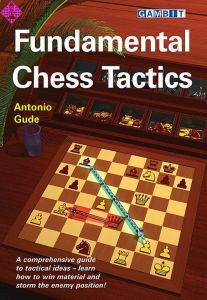 Fundamental Chess Tactics26,95 €
Fundamental Chess Tactics26,95 € -
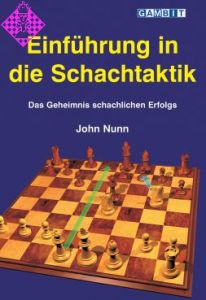 Einführung in die Schachtaktik14,95 €
Einführung in die Schachtaktik14,95 € -
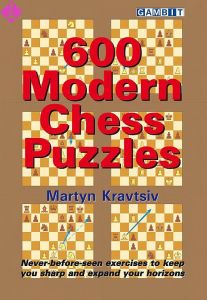 600 Modern Chess Puzzles19,95 €
600 Modern Chess Puzzles19,95 € -
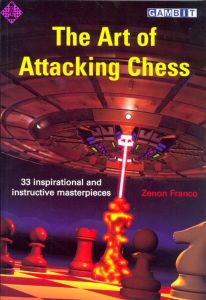 The Art of Attacking Chess11,50 €
The Art of Attacking Chess11,50 € -
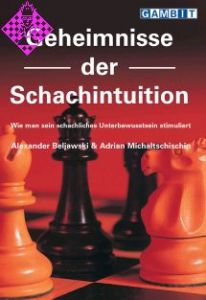 Geheimnisse der Schachintuition12,95 €
Geheimnisse der Schachintuition12,95 € -
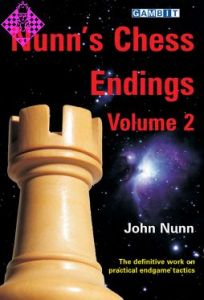 Nunn's Chess Endings - Vol. 221,50 €
Nunn's Chess Endings - Vol. 221,50 € - Mehr von Gambit

